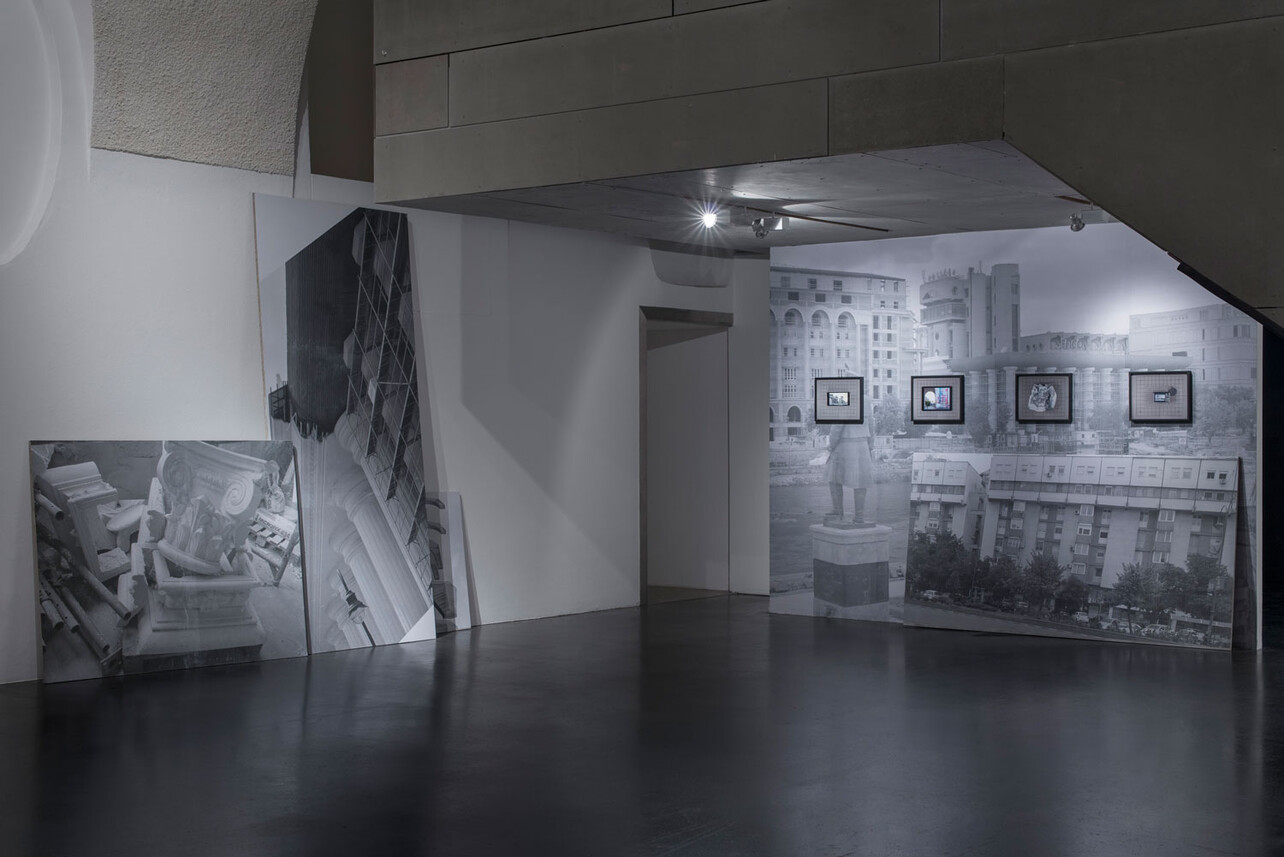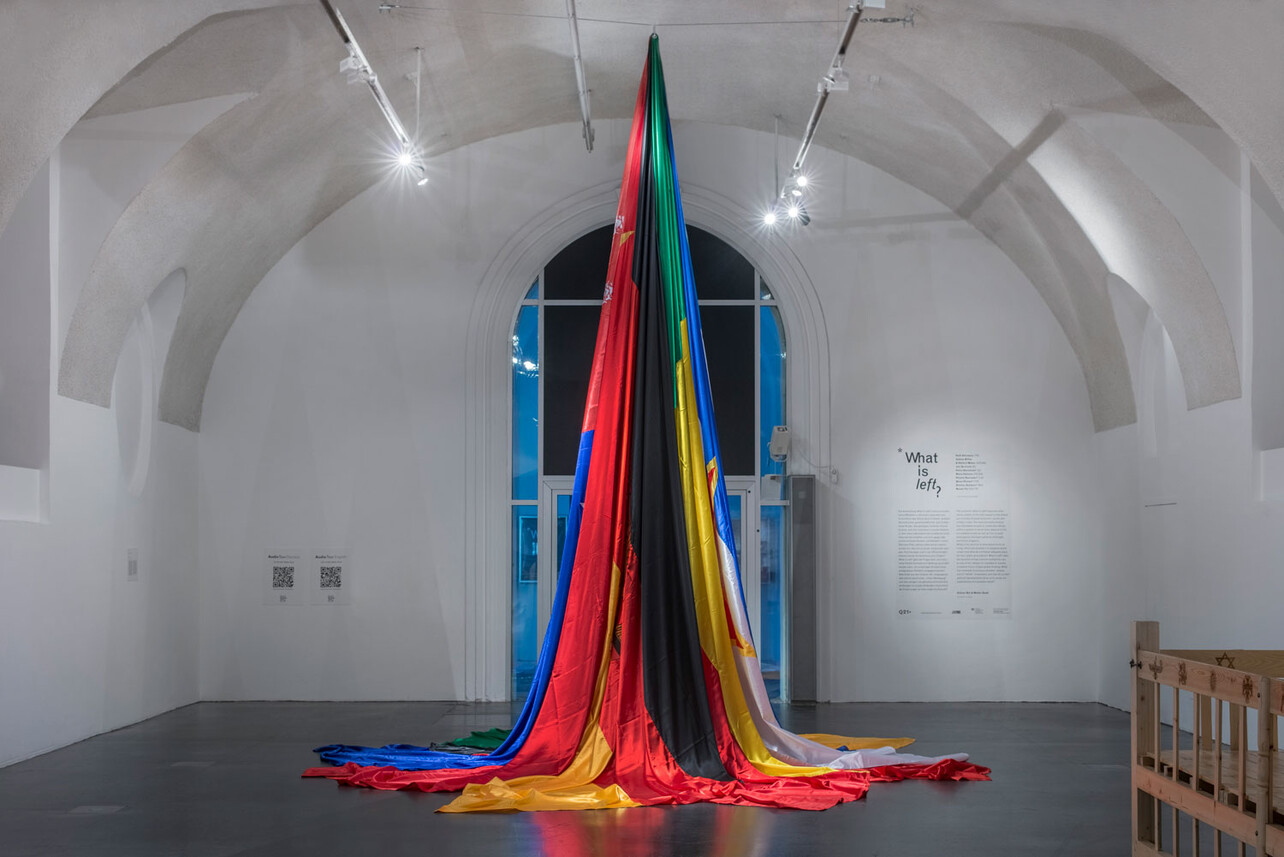
What is left?
Opening
Thu, Sep 22, 7 PMDuration
Sep 23 thru Nov 20, 2016Opening hours
Tue-Sun 1 - 4 PM, 4:30 - 8 PMAdmission
freeCurator's Guided Tour as part of ORF Langen Nacht der Museen: Sat, Oct 1, 20:00
Curator's Guided Tours as part of VIENNA ART WEEK 2016: Wed, Nov 16, 19:00
Artists:
Halil Altındere (TR), Sabine Bitter & Helmut Weber (A/CAN), Jan De Cock (B), Petra Gerschner* (D), Mona Hatoum (PS/GB), Khaled Ramadan* (LB), Şener Özmen* (TR), Dimitar Solakov* (BG), Nasan Tur (D/TR)
*Q21/MQ Artist-in-Residence
Curators: Gülsen Bal (GB/TR) and Walter Seidl (AT)
The exhibition project “What is left?” is being organized in cooperation with the Federal Ministry for Europe, Integration and Foreign Affairs (BMEIA).
What is the status quo in times of global economic, social, and military crises, and what remains of life’s potentials? This exhibition, which is curated by Gülsen Bal and Walter Seidl, examines alternative models vis-à-vis contemporary life conditions and the dominant political and financial systems.
The exhibition questions space as a site for variable forms of intervention and interruption in order to reflect rapid processes of change in light of various historical turning points. Artistic interventions have often been the necessary results of internal struggles to assert the power of self-enunciation and self-emancipation.
The featured works analyze how individuals are able to create alternatives within a system in which many aspects of life are predetermined, as well as how to push back against dominant patterns of thought and forms of agency. What is the position of alternative forms of living, which are situated in a marginal social context and often do not find an adequate place for their public articulation? “What is left?” asks the question of how cultural multiplicity can redeem its mandate to counter unilateral forms of post-global thinking. What has remained of previous decades’ utopias and of “leftist” movements, and how do current political developments force us to revise our expectations of a possible future?
The invited artists tackle intermediate zones of existence and offer critical, reflexive, and ironic contributions as counter-models to standardized patterns of living. The main focus lies on the changing parameters of how space is perceived from a public, historical, social, and political perspective.
Halil Altındere poses questions on current Syrian refugee issues, defining the associated encounters directly and openly by criticizing the limitations set by EU politics as well as the hypocritical and nationalist face presented by said politics to the world in his newly produced billboard “Köfte Airlines”.
The installation “Making Ruins”, produced by Sabine Bitter & Helmut Weber, deals with the remains of Japanese architect Kenzō Tange’s plan to rebuild Skopje after the earthquake of 1963. The fact that the Macedonian government would prefer to have the few remaining architectural traces of this plan removed raises questions with regard to history and its continuous ruptures as well as the political constitution of nations.
Jan De Cock’s series of “Memorial Drawings” hints at the precarious situations of many artists, who are threatened with total loss of their belongings and constantly faced with an uncertain destiny during their heroic avant-garde quests. In a multi-lingual collage series, the artist references Marcel Broodthaers’ questioning of the art market, the museum, and art per se.
Petra Gerschner* stages a 12-meter-long “red carpet” with the glowing slogan “join the winning side – smash capitalism” to hint at the necessity and potentiality of a different society, thereby standing in opposition to dominant power systems and phenomena of exclusion. Appropriating and collectivizing the “red carpet” breaks the dichotomy between actor and viewer, while the celebrity wall next to the carpet displays not logos but rather a video loop showing policemen in a spacey search for the remains of a past rebellion.
Mona Hatoum challenges “the stereotype of Arab women as passive” in her video work “Measures of Distance”. While Arabic script moves across the screen, viewers can gradually make out images of Hatoum’s mother. This very personal narrative employs direct reference to the artist's exiled condition in order to address the “disasters of war” and the ways in which political agendas result in deeply personal consequences.
Şener Özmen* placed a single image of a holiday travel moment he wished to experience in his recent work “An Overcast Day / Koh Samui”. Mentioning the Thai island of Koh Samui, a holiday destination that draws visitors from around the world, evokes images of a warm and distant land – which the artist chose to visit during the assaults on Diyarbakır in February 2016. The installation refers to moments of crisis and the many years of attacks on the Kurdish population in Turkey, especially in the cities of Diyarbakır, Cizre, and Şırnak.
In his multi-channel video work “RobOman – Empire of Silent Culture”, Khaled Ramadan questions the discrepancies between dream and reality by reflecting on the cultural scene of Oman. This work reveals the virtual absence of artistic and cultural output addressing contemporary social conditions in the Arab world; this has been the case ever since the beginning of the post-colonial era there, with most political and cultural activities having been subject to state control.
"New Life for the Past” by Dimitar Solakov* confronts us with historical sites throughout Bulgaria that have been incorrectly or insufficiently restored using millions of EU funding, thus demonstrating how cultural heritage can be at the mercy of those in power but nonetheless cries out for historical justice. His work focuses on the ancient settlement of Novae and the city Sozopol with series of photos as well as series of animal fossil drawings that deliberately question the subjective perception of history.
Nasan Tur explores political ideologies, subliminal messages, and symbols of power and dissent, all of which are present throughout his six-meter-high installation “Once upon a time”, which shows eight different national flags of countries that no longer exist – hence questioning what is left thereafter.
Interviews
Nasan Tur in Conversation with Gülsen Bal
As part of the exhibition “What is left?” curated by Gülsen Bal and Walter Seidl at frei_raum Q21 exhibition space/MQ, Nasan Tur shows his installation “Once upon a time”. The artist explores…



